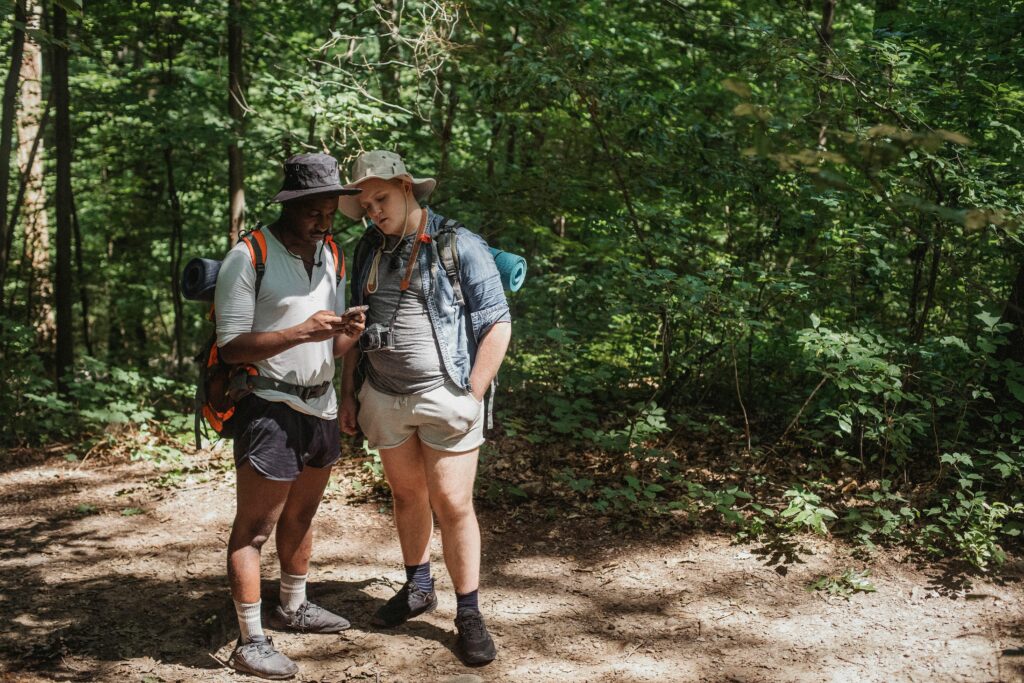Introduction: A Trail Like No Other
Spanning over 2,190 miles from Georgia to Maine, the Appalachian Trail (AT) is one of the most iconic long-distance hiking paths in the world. Winding through 14 states, it offers breathtaking mountain views, dense forests, flowing creeks, and a spiritual connection with nature that few places can match.
But for first-time hikers, the AT can also be intimidating. How do you prepare for such a massive adventure? What gear do you need? How far should you hike as a beginner?
This comprehensive guide is tailored for beginners dreaming of hiking the Appalachian Trail, whether you’re planning a weekend section or aiming for a full thru-hike.
Understanding the Appalachian Trail
The Appalachian Trail, often called the AT, is a National Scenic Trail maintained by the Appalachian Trail Conservancy (ATC) and thousands of volunteers. It stretches from Springer Mountain, Georgia, to Mount Katahdin, Maine, crossing the Blue Ridge Mountains, Shenandoah National Park, White Mountains, and more.
Hikers typically fall into three categories:
- Thru-hikers: Hike the entire trail in one season (5–7 months)
- Section hikers: Complete the trail in parts over months or years
- Day hikers: Explore small portions for recreation
As a beginner, section hiking or day hiking is a great way to get started.
Best Sections for Beginners
If you’re new to the trail, you don’t need to start with a massive expedition. There are many beginner-friendly sections with moderate terrain, great campsites, and easy trail access:
- Georgia to North Carolina: The southernmost part offers gentle climbs and beautiful forests
- Shenandoah National Park, Virginia: Wide paths, frequent road crossings, and scenic overlooks
- Massachusetts’ Berkshire Mountains: Moderate climbs with charming towns nearby
- Southern Pennsylvania: Gentle terrain and great shelters
These sections provide a true taste of the AT without overwhelming elevation or remote stretches.
Essential Gear Checklist for the Appalachian Trail
Hiking the AT doesn’t require expensive, high-end gear, but some essentials are non-negotiable:
Backpack (45-65L): Lightweight and supportive with a good hip belt
Tent or hammock: Weather-appropriate, easy to set up
Sleeping bag: Rated for at least 20°F, even in summer
Sleeping pad: For insulation and comfort
Water filter or purification tabs: Water from streams must be treated
Cook system: Stove, fuel, pot, and spork
Clothing: Quick-dry, moisture-wicking layers, rain gear, wool socks
Footwear: Trail runners or hiking boots that are broken in
Headlamp: With extra batteries
Navigation tools: Map, compass, or GPS app (e.g., FarOut app)
First aid kit: Include blister care, insect repellent, and personal meds
Food: Lightweight, high-calorie meals and snacks
Pack smart—less is more. Most new hikers overpack, only to send items home later.
How to Train for the Appalachian Trail
You don’t need to be an ultra-athlete to hike the AT. However, building endurance and strength is crucial.
Start walking regularly with your loaded backpack. Gradually increase your distance and elevation gain. Aim for at least:
- 3–5 miles, 3–4 times a week
- Weekend hikes on actual trails
- Stair climbing or hill repeats to simulate mountain terrain
The trail’s uneven, rocky paths demand strong ankles, so consider exercises like:
- Lunges and squats
- Balance drills
- Hiking with trekking poles to protect knees and improve stability
How Far Should You Hike Daily?
For beginners, 8–10 miles a day is a safe average. Don’t push too hard in the first few days; your body needs time to adjust.
Thru-hikers may eventually reach 15–20 miles per day, but beginners should listen to their bodies and take rest days.
Plan campsites ahead using apps like FarOut or AllTrails, which show distances, water sources, shelters, and terrain difficulty.
Where to Sleep: Shelters vs. Tents
The AT features over 250 shelters — basic three-sided wooden structures usually near water and toilets. Shelters are great for rain protection and socializing, but they can fill up.
Many hikers prefer to carry a tent or hammock to give themselves flexibility and solitude. Make sure to camp at designated sites to preserve the environment.
Trail Etiquette and Leave No Trace Principles
Respecting the trail and fellow hikers is key to a good experience. Follow these principles:
- Pack it in, pack it out: Leave no trash
- Stay on trail: Avoid damaging flora
- Be quiet at night: Respect sleep and wildlife
- Hang your food: Use bear bags or boxes to avoid animal encounters
- Yield to uphill hikers and say hello — it’s part of trail culture!
Leave No Trace isn’t just a suggestion — it’s a trail ethic that protects this national treasure.
Safety Tips for Beginners on the Appalachian Trail
While the AT is generally safe, it’s important to take precautions:
- Check the weather daily — sudden storms are common
- Let someone know your plans before heading out
- Carry a map and compass, even if using GPS
- Don’t hike at night, especially in unfamiliar terrain
- Watch for ticks, and do nightly checks
- Carry a whistle and basic self-defense tools (if desired)
Most hikers report the trail community as supportive and kind, but solo hikers—especially women—may want to join a trail buddy group or online forum for company.
Costs and Budgeting for the Trail
Even a short section hike has costs. Budget for:
- Gear: $500–$1,000
- Food: $10–$20 per day
- Transportation: To/from trailheads
- Lodging: Hostels or hotels for zero-days
A full thru-hike can cost $5,000 to $7,000, but a weekend section hike can be done for under $200 depending on location and gear.
The Trail Community: Hiker Culture and Support
One of the best parts of the Appalachian Trail is the trail culture. You’ll meet “trail angels” who offer free food, rides, or encouragement. Fellow hikers often adopt trail names, share supplies, and look out for each other.
There’s a shared sense of purpose among hikers, whether they’re walking 5 miles or 500. Don’t be afraid to connect.
Conclusion: Your First Steps on the Appalachian Trail
The Appalachian Trail isn’t just a hike — it’s a life-changing journey. As a beginner, you don’t need to conquer it all at once. Start small. Pick a manageable section. Prepare with intention. Listen to your body. And most importantly — enjoy the experience.
Whether you hike for a day, a week, or aim to thru-hike the whole trail, you’ll discover the freedom of the mountains, the silence of the woods, and the strength within yourself.
Every journey starts with a single step — why not take yours on the Appalachian Trail?



